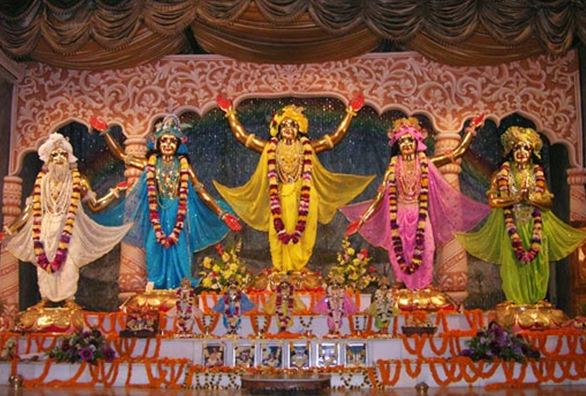In the summary of Sri Caitanya-caritamrta Madhya lila 9, we read that Lord Caitanya Mahaprabhu made a stop at Kamakosthi-puri during His southern India travels, on his way to southern Mathura (Madurai).
CC Madhya 9 Summary: “Finally the Lord went to Sri Ranga-ksetra, where He converted a brahmana named Venkata Bhatta, who, along with his family, became a devotee of Krsna. After leaving Sri Ranga, Caitanya Mahaprabhu reached Rsabha-parvata, where He met Paramananda Puri, who later arrived at Jagannatha Puri. Lord Sri Caitanya Mahaprabhu then proceeded further, arriving at Setubandha Ramesvara. At Sri Saila-parvata, the Lord met Lord Siva and his wife Durga in the dress of a brahmana and brahmani. From there, He went to Kamakosthi-puri and later arrived at southern Mathura.”
In his purport to Madhya lila text 9.78, Srila Prabhupada provides more detail about the Lord’s pilgrimage to Kamakosthi-puri, which is also known by the names Kamakosni and Kumbhakarna. While serving as the capital of the Chola kingdom, the place was known as Kumbhakonam, and it commonly goes by that name today. Madhya 9.78 “At Kumbhakarna-kapala, Sri Caitanya Mahaprabhu saw a great lake and then the holy place named Siva-ksetra, where a temple of Lord Siva is located.
PURPORT : Kumbhakarna is the name of the brother of Ravana. At the present moment the city of Kumbhakarna-kapala is known as Kumbhakonnam; it is situated twenty miles northeast of the city of Tanjorean. There are twelve temples of Lord Siva located at Kumbhakonnam, as well as four Visnu temples and one temple to Lord Brahma. Siva-ksetra, within the city of Tanjorean, is situated near a big lake known as Siva-ganga. At this place, a large temple of Lord Siva known as Brhatisvara-siva-mandira.”
Later in Madhya lila, we read the following narratives: Madhya 9.177-178. “After talking with Lord Siva, Sri Caitanya Mahaprabhu took his permission to leave and went to Kamakosthi-puri.”

